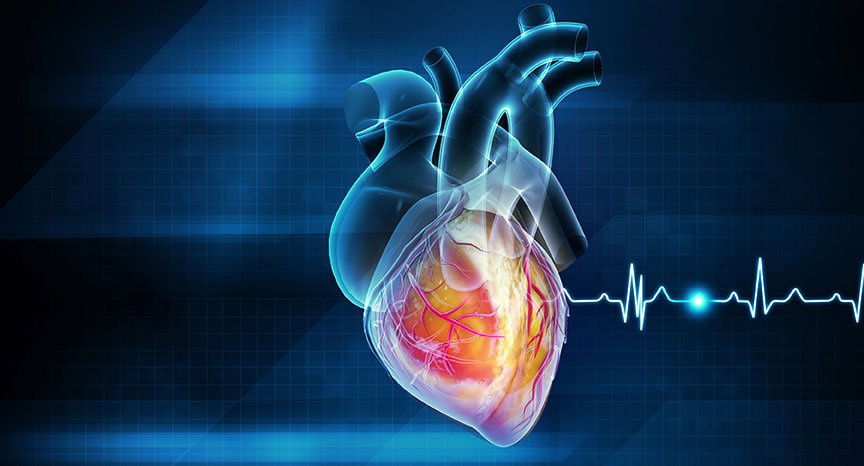


Science in Service
of
Medicineresult
President & CEO Letter
2025 Annual Metrics
Cycle of Translation
Visionary Gifts of Hope


Introduction

Ann Kimball and John W. Johnson Center for Cellular Therapeutics at Houston Methodist

Houston Methodist Dr. Mary and Ron Neal Cancer Center

The Food & Health Alliance within the Houston Methodist Lynda K. and David M. Underwood Center for Digestive Disorders, Immunology Center and the Fondren Inflammation Collaborative

Houston Methodist Cockrell Center for Advanced Therapeutics

Paula and Joseph C. “Rusty” Walter III Translational Research Initiative

Jerold B. Katz Academy of Translational Research

Infectious Diseases Research Fund

George and Angelina Kostas Research Center for Cardiovascular Medicine

New Endowed Chairs Positions

EnMed

Center for Bioenergetics

From Discovery to Clinic


What is "Discovery to Clinic"?

Clinical Research


Houston Methodist Conducts First-Ever Study into a Challenging Situation

Can Regulating Cellular Aging Mitigate Both Cancer and Heart Disease?

Innovative Treatment for Chronic Rhinitis is Safe and Effective


Masters of Disguise: Glioblastomas Trick the Immune System by Masquerading as Reproductive Tissue
Improved Options for Patients with Severe Retinal Vascular Disease

A New FDA-Approved Treatment for Sufferers of Chronic Constipation

Houston Methodist joins the Gulf Coast Consortia

Outcomes, Quality and Healthcare Performance


New Findings on RNA Helicases May Yield New Intestinal Disease Therapy

Houston Methodist and Pennsylvania State University Collaborate on a Smartphone App That Could Revolutionize Stroke Diagnosis

New Frontiers to Improve Cardiovascular Medicine and Disease Management

Ongoing Lessons in a Pandemic

Transplants can Boost Survival Rate of Patients with Unresectable Liver Cancers

Telehealth Video Visits During the COVID-19 Pandemic – a Glimpse into the Future?

SARS-CoV-2 Induced Chronic Oxidative Stress and Endothelial Cell Inflammation May Increase Likelihood of Cardiovascular Diseases and Respiratory Failure

Restorative Medicine


Lessening Pain After Knee Replacement Surgery

Do Motor Neurons First Die in the Brain? Study Provides Clues about ALS Origins

Bringing Back Hand Function in People with Complete Spinal Cord Injury

Novel Vascular Engineering Platforms Are a Boon for Bioengineering

Ultra-high-Resolution Scanner Reveals if Knee Injury Advances to Osteoarthritis

Houston Methodist Model Demonstrates Reversal from Heart Failure State, Creating the Potential for Innovative Treatment Avenues

Precision Medicine


Rapidly Scalable, All-Inducible Neural Organoids Could Facilitate Drug Screening for Neurological Diseases

Importance of the Coronary Artery Calcium Score in Risk Assessment and Prevention of Atherosclerotic Cardiovascular Disease

COVID-19 Infection in Crucial Brain Regions May Lead To Accelerated Brain Aging

Interleukin 9 Secreting Polarized T Cells Show Potential in Solid and Liquid Tumor Treatment

The NanoLymph: Implantable. Adaptable. Anti-cancer

Science in Service
of
Medicine
From the President
2025 Annual Metrics
Cycle of Translation
result
Advancing Cardiovascular Health and Wellness

Health care systems have historically focused on diagnosing and treating people who have developed troubling symptoms and Houston Methodist excels at this. The DeBakey Heart and Vascular Center is the highest nationally ranked hospital in Texas and the Gulf Coast for heart care, offering advanced cardiovascular surgery and restorative therapies for unavoidable events. However, Houston Methodist is heavily invested in the next health frontier—lifelong wellness and cardiovascular health—and is leveraging advanced research and experience with caring for patients of all ages to lengthen the time that people spend in good health. The DeBakey faculty recently published a series of papers that advanced our understanding to maintain, protect and enhance cardiovascular health.
01
Keto and Cholesterol:
A Fat-Burning Paradox

While diet plans come and go, low-carbohydrate, high-fat, ketogenic “keto” diets have retained their staying power for more than 20 years. Does following a diet centered on consuming foods high in fats such as meats, eggs, and oils raise heart disease risk?
Cholesterol levels are an index of heart disease risk, as excess cholesterol can contribute to plaque buildup in coronary arteries. A recent meta-analysis of 41 human trials investigating the physiological effects of a keto diet revealed surprising information about the diet’s impact on "bad" low-density lipoprotein (LDL) cholesterol levels. Overweight people following the keto diet for weight loss had no change in their LDL over time. However, this diet is also popular among lean people seeking a high-protein diet to build muscle. When following a keto diet, these individuals LDL cholesterol levels often rise to an unhealthy level, giving rise to the novel “lean mass hyper-responder” (LMHR) phenotype.
Atherosclerosis
Healthy Artery
Khurram Nasir, MD
Khurram Nasir, MD, William A. Zoghbi, MD Centennial Chair in Cardiovascular Health and Professor of Cardiology, and his team sought to determine whether the increased cholesterol observed in LMHR keto dieters is accumulating as plaque in their coronary arteries, raising their chances of suffering a heart attack or stroke.
By analyzing coronary computed tomography angiography and coronary artery calcium scan data from large-scale keto diet-focused clinical studies, Nasir’s team evaluated coronary artery plaque levels within LMHR keto dieters compared with matched controls not on a keto diet for an average of 4.7 years.
The team found that for those in the LMHR group, several years of carbohydrate restriction-induced elevations in LDL cholesterol did not increase their coronary plaque burden, relative to controls as detailed in JACC: Advances.
Nasir noted, “LMHR is an emerging phenotype of growing research interest with little known about mechanisms and risks. Clinicians’ awareness of the unique aspects of LMHR may facilitate more personalized patient management.”
02
The PERKS of Protection:
Preventing Viral Attacks on the Heart

Viruses are among the more curious denizens of the natural world. Since they aren’t composed of cells, they need an unsuspecting host to help them replicate—infecting and often causing disease in the host as they grow in numbers. Many different viruses, including those responsible for the flu and COVID-19, can trigger viral myocarditis. This inflammatory cardiac disease can reduce the heart’s ability to pump effectively and is a leading cause of death in young adults. Once a virus infects the heart, there are no effective treatments for myocarditis since the exact physiological mechanisms driving the disease have remained elusive … until now.

Junji Xing, PhD
Junji Xing, PhD, Assistant Research Professor of Immunology in Surgery, Department of Cardiovascular Sciences, and his team, are helping to develop effective viral myocarditis treatments that protect the heart by revealing the molecular pathways involved of this disease.
“Our curiosity was piqued by the potential role of TRIM29, a protein known for its role in various cellular processes but not clearly understood in the context of myocarditis,” noted Xing. “We were especially interested in how TRIM29 influenced the protein kinase RNA-like endoplasmic reticulum kinase (PERK)-mediated endoplasmic reticulum (ER) stress response—a pathway impacting cellular survival and stress reactions.”
Xing’s team discovered that cardiotropic viruses highly induced TRIM29 and promoted PERK-mediated ER stress, apoptosis and reactive oxygen species responses that support viral replication in cardiomyocytes in vitro. These findings were published in Nature Communications.
TRIM29 deletion or PERK inhibition with GSK2656157 protected mice from viral myocarditis by disrupting the TRIM29-PERK connection, which bolstered cardiac function, enhancing cardiac antiviral responses and curbing inflammation and immunosuppressive monocytic myeloid-derived suppressor cells in vivo.
“We’re pleased to learn that TRIM29 deficiency and pharmacological targeting of the TRIM29-PERK axis had a significant protective effect against viral myocarditis, reducing viral replication and symptoms,” Xing said. “Our findings make PERK inhibitor a promising drug to move forward to clinical trials for treating patients with viral myocarditis.”
03
Clean Air and Green Space
is Nature’s Prescription

Health care providers have long advised their patients to adopt healthy diets, regular exercise and good sleep habits to reduce cardiometabolic risks. However, an equally important factor is the environment in which patients live. The level of air pollution in their community and the availability of safe, accessible places for physical activity can significantly impact health outcomes.
Sadeer Al-Kindi, MD
Sadeer Al-Kindi, MD, Jerold B. Katz Investigator and Associate Professor of Medicine, is pioneering research to identify which neighborhoods correlate with higher risks of heart disease, aiming to tailor medical care more personally to each patient's living conditions.
Exposure to particulate matter air pollution of less than 2.5 microns (PM2.5) is a major determinant of cardiometabolic disease. The Global Burden of Disease assessment estimates that 20% of global Type 2 diabetes cases are related to chronic exposure to PM2.5. This exposure is also linked with insulin resistance, blood pressure elevation and childhood obesity. Al-Kindi's detailed analysis on this topic was published in Lancet Diabetes & Endocrinology.
With 99% of the global population, including some residents in the Greater Houston area, living in environments with unsafe air pollution levels; Al-Kindi is working to understand the connection between air pollution and other environmental factors with cardiovascular disease, aiming to develop mitigation strategies.
Even in areas without excessive air pollution, the human-made structures and spaces where we live, work and play are closely linked with cardiovascular health. Previous studies often relied on broad population data or single metrics, neglecting the complex interplay of neighborhood characteristics.
The implications of this work are profound, offering scalable tools to assess environmental impacts on heart health, potentially guiding interventions to tackle health disparities and improve cardiovascular outcomes across the U.S. communities.
Sadeer Al-Kindi, MD
Al-Kindi's team analyzed data from 1.07 million patients in the Houston Methodist Learning Health System Outpatient Registry. Each patient was assigned a NatureScore™, which measures the quality and quantity of nature in their area, and a WalkScore, assessing neighborhood walkability. The study, published in JACC: Advances, revealed that living in highly walkable neighborhoods with ample nature exposure significantly reduced the odds of cardiovascular risk factors.
Further, Al-Kindi employed deep learning to analyze Google satellite imagery across seven U.S. cities, linking built environment features to neighborhood-level heart disease rates, as published in the European Heart Journal and JAMA Cardiology. These machine vision-derived features better predict heart disease prevalence than traditional demographic and socioeconomic data alone.
“The implications of this work are profound, offering scalable tools to assess environmental impacts on heart health, potentially guiding interventions to tackle health disparities and improve cardiovascular outcomes across U.S. communities,” said Al-Kindi.
04
When Good Cholesterol Goes Bad
Khurram Nasir, MD
Houston Methodist researchers have discovered that certain components of so-called "good" cholesterol–HDL–may be associated with an increased risk of cardiovascular disease. Led by Henry J. Pownall, PhD, Professor of Biochemistry in Medicine and Khurram Nasir, MD, the research team is investigating the role of certain properties of HDL-C in heart health.
“During routine checkups, adults have their cholesterol levels tested, which includes both "bad" LDL cholesterol and "good" HDL cholesterol,” said Pownall, who is the lead author on a paper recently published in Journal of Lipid Research. “Not all cholesterol, however, is born the same. What is not commonly recognized is that each type of cholesterol has two forms—free cholesterol, which is active and involved in cellular functions, and esterified or bound cholesterol, which is more stable and ready to be stored in the body. Too much free cholesterol, even if it is in HDL, could contribute to heart disease.”
In pre-clinical studies, the team discovered that HDL with a high content of free cholesterol is likely dysfunctional. To validate their findings, they are currently at the halfway point of the NIH-funded Houston Heart Study with 400 patients with a range of plasma HDL concentrations.
The most surprising finding from our study, thus far, is that there is a strong link between the amount of free cholesterol in HDL and how much of it accumulates in white blood cells called macrophages, which can contribute to heart disease.
Henry J. Pownall, PhD
Sanford I. Weill and Antonio M. Gotto, Jr., MD Centennial Chair in Translational Biomedical Sciences Education
While it was previously thought that the transfer of free cholesterol to HDL was beneficial for heart health by removing excess cholesterol from tissues, the data shows that in the context of high plasma HDL concentrations, the reverse is true—free cholesterol transfer from HDL to the white blood cells in blood and tissues could actually raise one’s risk for cardiovascular disease.
Once they reach their immediate goal of showing that excess free cholesterol in HDL is associated with excess cardiovascular disease, the research team plans to develop new diagnostics and treatments for managing heart disease, as well as use HDL-free cholesterol as a biomarker to identify patients requiring HDL-lowering therapies.
More from Breakthroughs & Innovation






















